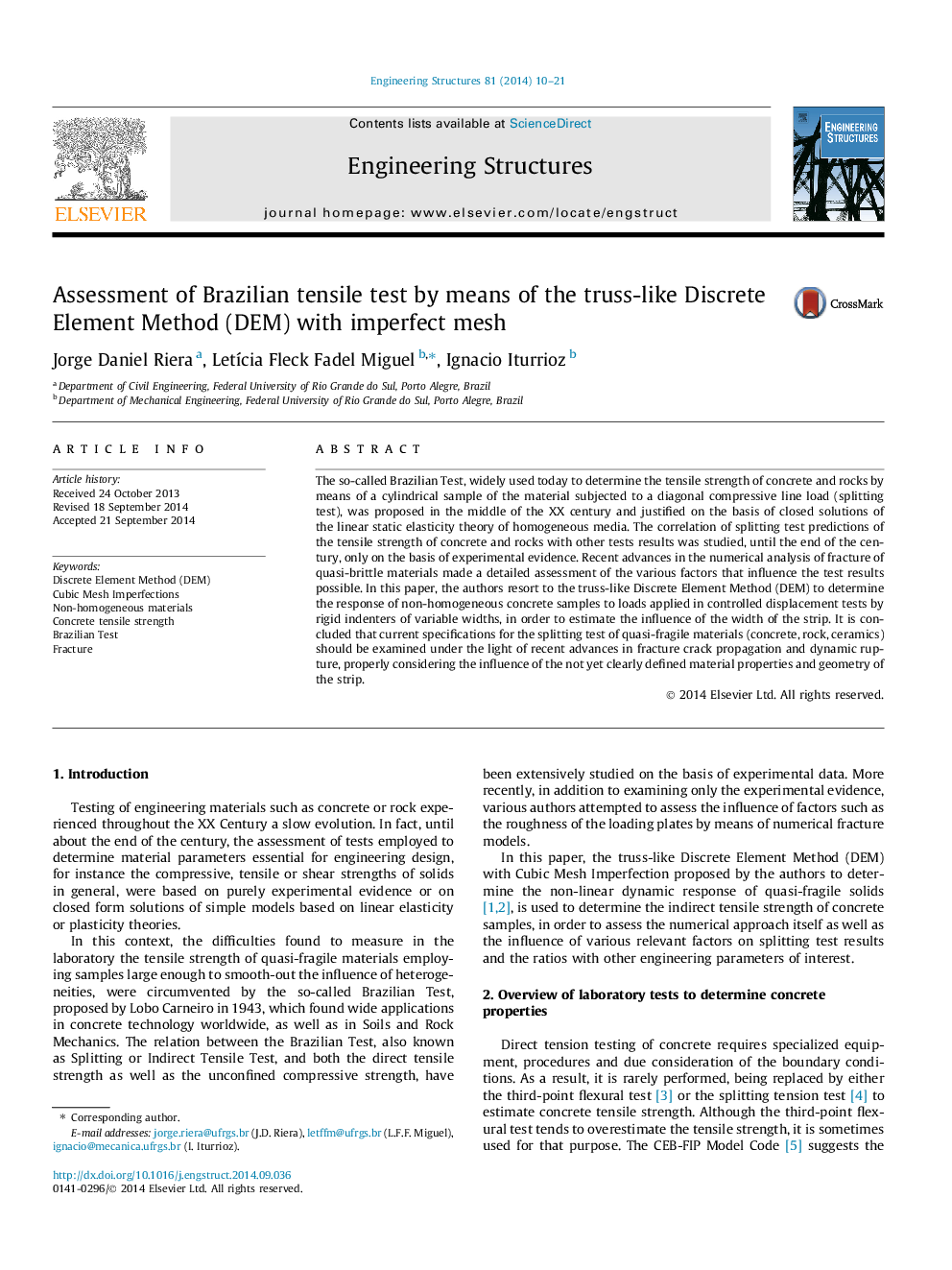| Article ID | Journal | Published Year | Pages | File Type |
|---|---|---|---|---|
| 6740688 | Engineering Structures | 2014 | 12 Pages |
Abstract
The so-called Brazilian Test, widely used today to determine the tensile strength of concrete and rocks by means of a cylindrical sample of the material subjected to a diagonal compressive line load (splitting test), was proposed in the middle of the XX century and justified on the basis of closed solutions of the linear static elasticity theory of homogeneous media. The correlation of splitting test predictions of the tensile strength of concrete and rocks with other tests results was studied, until the end of the century, only on the basis of experimental evidence. Recent advances in the numerical analysis of fracture of quasi-brittle materials made a detailed assessment of the various factors that influence the test results possible. In this paper, the authors resort to the truss-like Discrete Element Method (DEM) to determine the response of non-homogeneous concrete samples to loads applied in controlled displacement tests by rigid indenters of variable widths, in order to estimate the influence of the width of the strip. It is concluded that current specifications for the splitting test of quasi-fragile materials (concrete, rock, ceramics) should be examined under the light of recent advances in fracture crack propagation and dynamic rupture, properly considering the influence of the not yet clearly defined material properties and geometry of the strip.
Related Topics
Physical Sciences and Engineering
Earth and Planetary Sciences
Geotechnical Engineering and Engineering Geology
Authors
Jorge Daniel Riera, LetÃcia Fleck Fadel Miguel, Ignacio Iturrioz,
